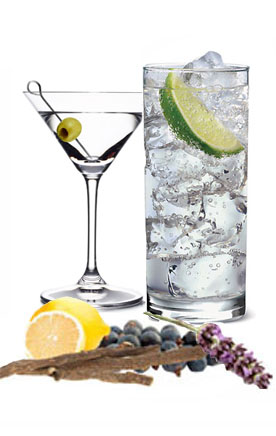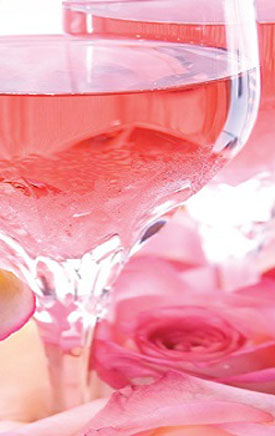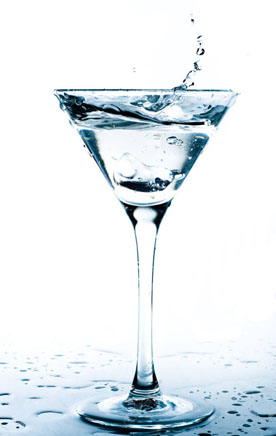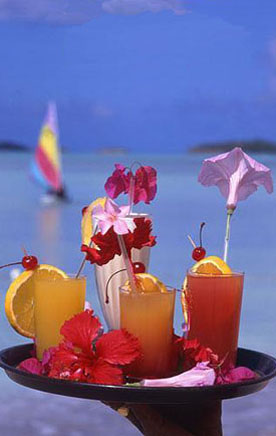Enjoying Wine
ENJOYING WINE
Part of the enjoyment of wines comes from the conversations they inspire.
Quite often, the subject is the wine itself. Talking about wine should be easy and relaxed. To help matters along, we have defined the most commonly-used words and phrases, with particular emphasis on wine aromas. Most wine commentary proceeds by analogies and suggestions, so trust your instincts, offer your impressions, and create your own descriptions.
- Aroma. All-purpose word for the smell of a wine, which may vary in type (i.e. fruity, floral, spicy) and in strength. Aroma is used in the general sense and in usually positive.
- Astringent. The sensation of a wine that leaves a puckery feel in the mouth and seems to dry out the palate. Most young Cabernets and Zinfandels are astringent. Tannins from the grapes and oak barrels contribute to astringency, which is more common in red wines.
- Austere. Characteristic of wines that are lean in body and high in acidity, but overall on the pleasant side. Usually white wines are likely to be austere in style.
- Balanced. When all of wine's components (i.e. fruit, alcohol, acidity, tannin, oak, sweetness) exist is a harmonious way, the wine is said to be balanced.
- Berrylike. Common aroma description for wines with a fairly distinct fruit character. Zinfandels are often described as blackberries, Cabernets similar to black currants, and Pinot Noirs to cherries.
- Body. The relative weight of a wine or its viscosity. Ranges from thin to light, to medium, to full-bodied. How a wine clings to the sides of a glass when you swirl it is an indication of its body.
- Bouquet. The odours developed through the aging process as distinguished from the fruity/spicy aroma of the grape.
- Complex. Describes both aromas and flavours, and the existence of several facets simultaneously. Multi-dimensional wines are complex. The opposite style is simple or one-dimensional.
- Crisp. Wines that are lively on the palate and leave you with a lip-smacking impression, similar to tart. Usually results from relatively high acidity.
- Dry. Basically, the opposite of sweet.
- Earthy. Exists in varying degrees, from a subtle aroma of dusty weediness to a pungent aroma of mushrooms and truffles. More commonly found in red wines.
- Floral. Aromas similar to flowers in bloom are said to be floral. White wines such as Johannisberg Riesling and Gewürtztraminer are often floral with hints of jasmine and orange blossoms. The aroma of violets and roses exists in some Pinot Noirs.
- Grassy. A fresh, lively aroma reminiscent of freshly cut grass, usually considered pleasant, and characteristic of many Sauvignon Blancs. Some Chardonnays and a few Chenin Blancs can be grassy.
- Herbaceous/Herbal. Collective terms for aromas hinting of dried herbs such as sage, dill, and mint. Herbaceousness is most often found in Sauvignon Blanc.
- Honey. An enticing sweet smell present in some white wines. It is usually a result of Botrytis cinerea, "the noble rot".
- Nose. The combination of all odours, (aroma, bouquet, oak, etc.), detected by the olfactory sense.
- Oaked. The aroma derived directly from oak barrel aging and usually described as vanilla-like. The oak is fired to conform to a barrel shape.
- Smoky. An aroma derived mostly from fired oak barrels and often perceived as toasty or toasted, similar to the smell of burning leaves.
- Spicy. Many fine wines are characteristically spicy, suggesting cloves, cinnamon, and pepper. Zinfandel and Syrah wines tend to be peppery; among white wines, Gewürtztraminer can be very spicy.
- Supple. A wine that is extremely subtle in a soft, smooth style without being heavy in body.
- Vegetative. This covers a range of aromas, from the quite attractive smell of green olives and bell peppers often common to Cabernet Sauvignon and Sauvignon Blanc, to the less attractive green bean and asparagus smells sometimes detected in both types of wine.
- Yeasty. An aroma similar to fresh-baked bread, highly desirable in Champagne and sparkling wines. some white wines, notably Chardonnay and Sauvignon Blanc, are aged in contact with yeast and acquire a subtle yeastiness.
Copyright ©2001-25, The Fifty Best, Inc.




